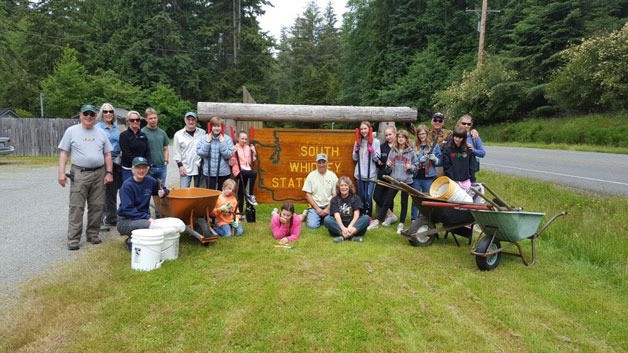Nine new interpretive signs were installed at South Whidbey State Park this summer, illustrating both the property’s ecological importance and its history.
The signs were placed along the Wilbert Trail and next to the parking lot at the main entrance, both high traffic areas. The idea was to educate park users about the property’s history, both how it came into being but also the environmental and wildlife facets that make it special.
“It’s a very rare, low-land and nearshore forest, and these signs help people understand what they’re seeing,” said Sue Ellen White, a past president of Friends of South Whidbey State Park and one of several project leaders.
The organization partnered with state parks staff to complete the project; it was funded with a $2,500 grant from the Washington State Parks Foundation, and utilized volunteer labor.
Work began in June installing eight signs on the Wilbert Trail, which was officially renamed the Wilbert Interpretive Trail. Park staff, plus a team of 18 volunteers from the Friends group and Girl Scout Troop 43514 dug the post holes at pre-selected locations along the 0.8 mile trail. Workers hauled water and 80-pound bags of cement, mixed and poured the cement to secure the sign posts, and installed the signs, according to a recent news release.
Work continued this month when the final sign, a large wheelchair accessible sign, was put in at the parking lot. It tells how South Whidbey residents fought to save the property from development in the 1970s, an effort that led to its creation as a state park.



